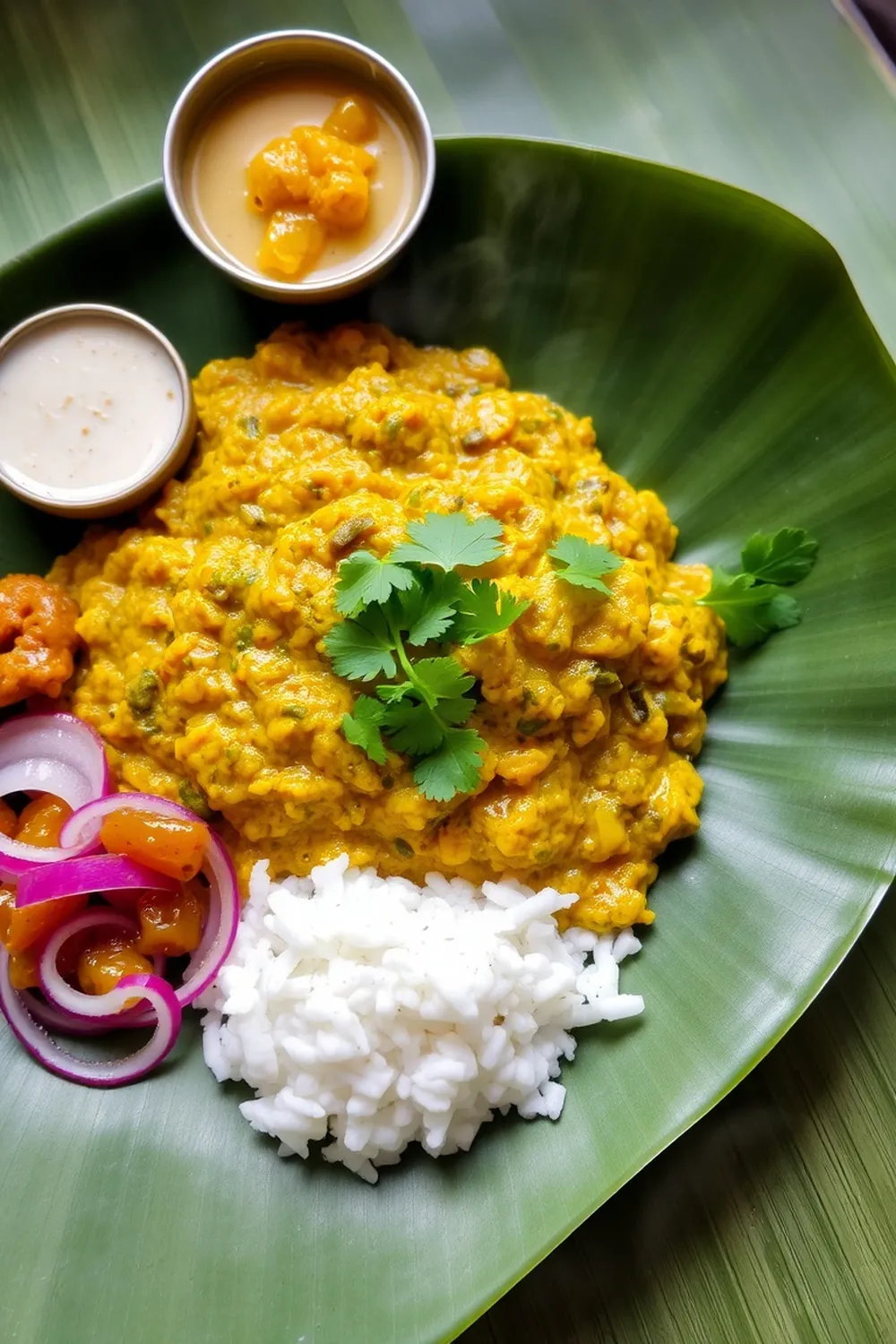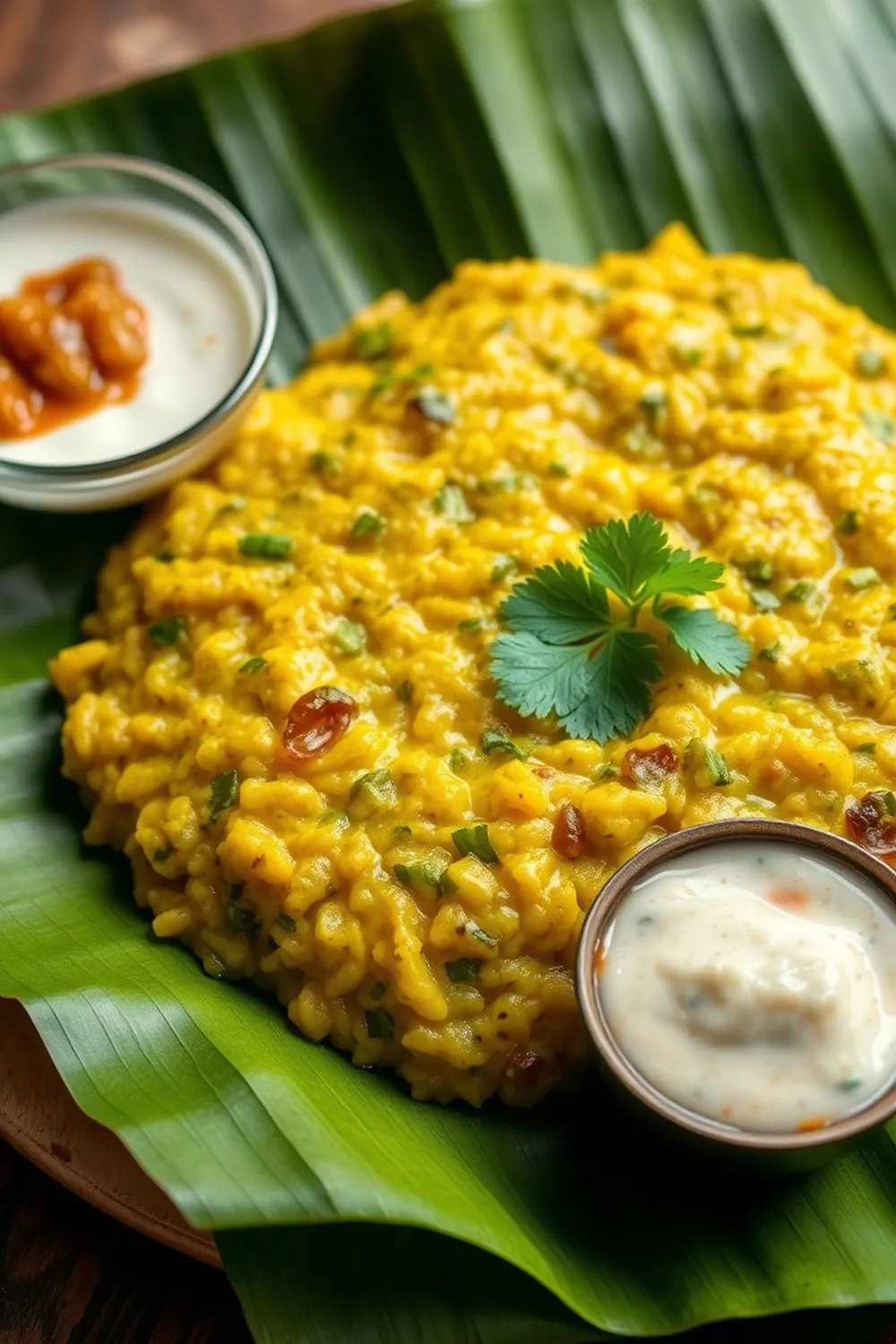- Dry roast sooji in a pan on low flame for 1-2 minutes, stirring continuously. Set aside.
- Heat oil in a wok. Add mustard seeds and let them splutter.
- Add urad dal and sauté briefly. Toss in green chilies, cashews, and curry leaves.
- Sauté onions until soft. Add ginger, tomatoes, salt, and turmeric. Cook for 1 minute.
- Pour water and bring to a boil. Gradually stir in roasted sooji to prevent lumps.
- Cook on low heat, stirring until water is absorbed. Cover and simmer for 3-5 minutes.
- Fluff gently, garnish with coriander leaves. Serve hot with chutney or pickle.
- Calories:191 kcal25%
- Energy:799 kJ22%
- Protein:1 g28%
- Carbohydrates:1 mg40%
- Sugar:1 mg8%
- Salt:39 g25%
- Fat:21 g20%
Last Updated on 5 months ago by Neha Deshmukh
Easy Sooji Upma Recipe – Semolina & Cashew Indian Breakfast
Introduction
Good morning, everyone! If you’re anything like me, mornings can be… hectic. That’s why I’m obsessed with quick, comforting breakfasts. And honestly, nothing beats a warm bowl of Sooji Upma. It’s a South Indian classic, and once you get the hang of it, it’s ready in under 30 minutes! I first made this when I was a student, trying to figure out how to feed myself something tasty and filling before classes. It’s been a staple ever since.
Why You’ll Love This Recipe
This Sooji Upma recipe is a winner for so many reasons. It’s incredibly easy to make, even if you’re new to Indian cooking. The combination of soft semolina, crunchy cashews, and fragrant curry leaves is just divine. Plus, it’s a wonderfully versatile dish – you can customize it with your favorite veggies and spices. It’s a perfect way to start your day!
Ingredients
Here’s what you’ll need to whip up this deliciousness:
- 1.5 cup sooji/semolina
- 3 tablespoon oil
- 0.5 teaspoon mustard seeds
- 0.5 teaspoon urad dal / black gram
- 3 slit green chilies
- 4 cashew nuts
- 8 fresh curry leaves
- 0.5 onion, finely chopped
- 0.25 teaspoon crushed ginger
- 2 tablespoon chopped tomatoes
- Salt to taste
- 0.25 teaspoon turmeric powder
- 3 cup water
- Chopped coriander leaves for garnishing
Ingredient Notes
Let’s talk ingredients! A few little things can make a big difference:
- Sooji/Semolina: I prefer using fine sooji for a softer texture, but medium sooji works too.
- Urad Dal: This adds a lovely nutty flavor. Don’t skip it if you can!
- Green Chilies: Adjust the number based on your spice preference. I usually use 2-3 for a mild kick.
- Cashews: These add a delightful crunch. Feel free to use more if you’re a cashew lover like me!
- Curry Leaves: Fresh curry leaves are essential. They add an authentic South Indian aroma.
Sooji/Semolina Varieties
Did you know there are different types of sooji? You’ll generally find fine, medium, and coarse varieties. Fine sooji (rava) results in a softer, fluffier upma, while coarse sooji gives a slightly grainy texture. Experiment to see which you prefer!
Regional Variations in Upma
Upma isn’t just one thing! Across India, you’ll find countless variations. Some add vegetables like peas, carrots, and beans. Others include lemon juice for a tangy twist. In some regions, they even add a touch of sugar for a slightly sweet flavor.
The Importance of Fresh Curry Leaves
Seriously, don’t underestimate the power of fresh curry leaves! They have a unique, citrusy aroma that elevates the entire dish. Dried curry leaves just don’t compare. If you can grow your own, even better!
Cashew Nuts: A Flavor & Texture Boost
Cashews aren’t just a tasty addition; they also add a wonderful textural contrast to the soft upma. You can lightly toast them before adding them to the tempering for an even more intense flavor.
Step-By-Step Instructions
Alright, let’s get cooking!
- First, dry roast the sooji in a pan on low flame for 1-2 minutes, stirring continuously. This removes any moisture and gives it a lovely nutty flavor. Set aside.
- Heat the oil in a wok or a deep pan. Once hot, add the mustard seeds and let them splutter. This is where the magic begins!
- Add the urad dal and sauté briefly until golden brown. Then, toss in the slit green chilies, cashews, and curry leaves. Let them sizzle for a few seconds.
- Sauté the chopped onions until they turn soft and translucent. Add the crushed ginger and chopped tomatoes, along with salt and turmeric powder. Cook for about a minute, stirring occasionally.
- Pour in the water and bring it to a boil. Now, here’s the key: gradually stir in the roasted sooji to prevent lumps from forming. Keep stirring!
- Reduce the heat to low and cook, stirring continuously until the water is absorbed. Once the upma starts to thicken, cover the pan and simmer for 3-5 minutes. This allows the sooji to cook through completely.
- Finally, fluff the upma gently with a fork. Garnish with fresh coriander leaves and serve hot with your favorite chutney or pickle.
Expert Tips
- Don’t overcook the sooji: Overcooked upma can become mushy.
- Stir constantly: This prevents lumps and ensures even cooking.
- Adjust water as needed: If the upma seems too dry, add a splash of water.
Variations
- Vegan Upma Adaptation: Simply skip the cashews or substitute them with roasted peanuts.
- Gluten-Free Considerations: Sooji is generally gluten-free, but always check the packaging to ensure it’s processed in a gluten-free facility.
- Spice Level Adjustments: Add a pinch of red chili powder for extra heat.
- South Indian Style Upma: Add a pinch of asafoetida (hing) to the tempering for a more authentic South Indian flavor. My grandmother always added hing!
Serving Suggestions
Upma is fantastic on its own, but it’s even better with accompaniments! I love serving it with:
- Coconut chutney
- Tomato chutney
- Sambar
- Pickle
Storage Instructions
Leftover upma can be stored in an airtight container in the refrigerator for up to 2 days. Reheat gently with a splash of water. It won’t be quite as fluffy as fresh upma, but still delicious!
FAQs
What is the best type of sooji to use for Upma?
Fine sooji (rava) is generally preferred for a softer texture, but medium sooji works well too.
How can I prevent the Upma from becoming sticky?
Roasting the sooji beforehand and stirring continuously while adding water are key to preventing stickiness.
Can I make Upma ahead of time?
While best enjoyed fresh, you can make upma ahead of time and reheat it. It might lose some of its fluffiness, though.
What chutneys or accompaniments go well with Upma?
Coconut chutney, tomato chutney, sambar, and pickle are all excellent choices!
Is Upma a healthy breakfast option?
Absolutely! Sooji is a good source of carbohydrates and fiber. Plus, you can add vegetables to boost the nutritional value.








